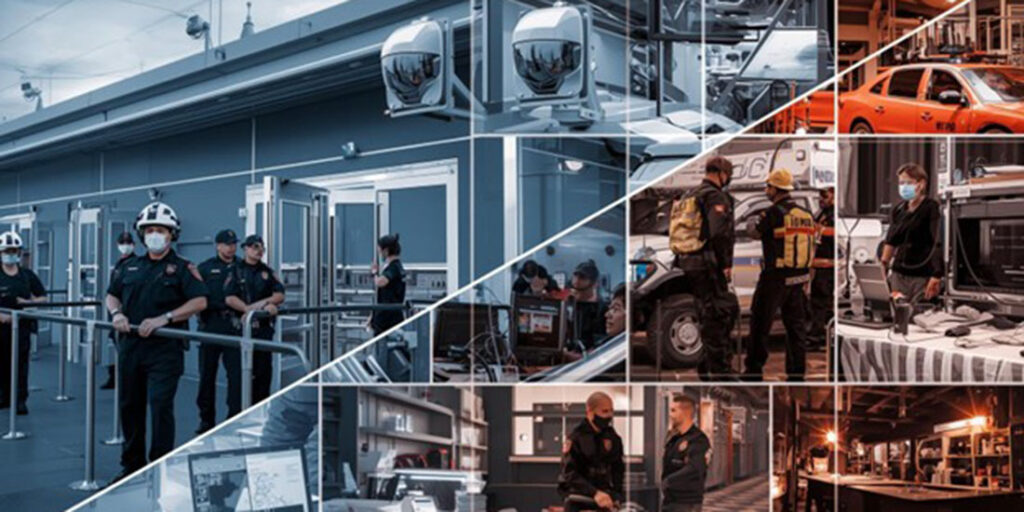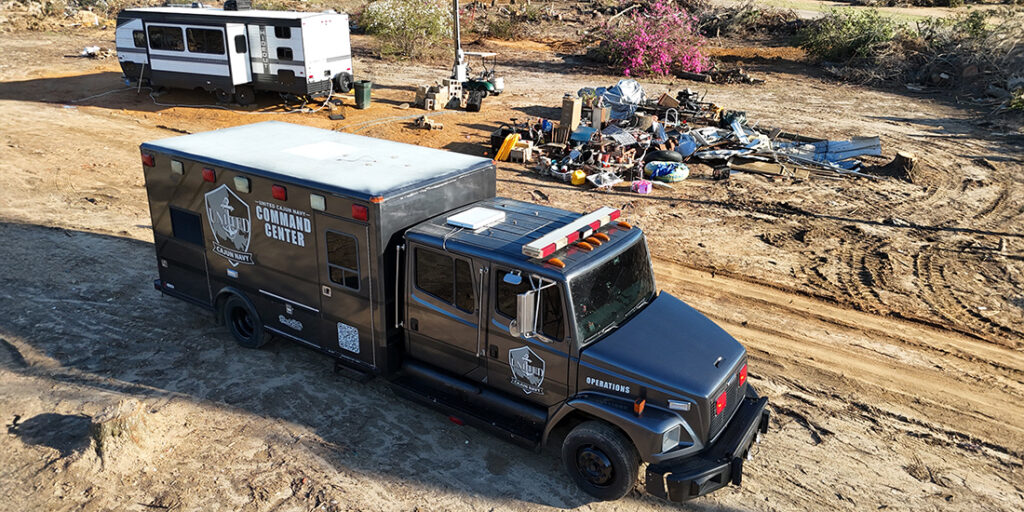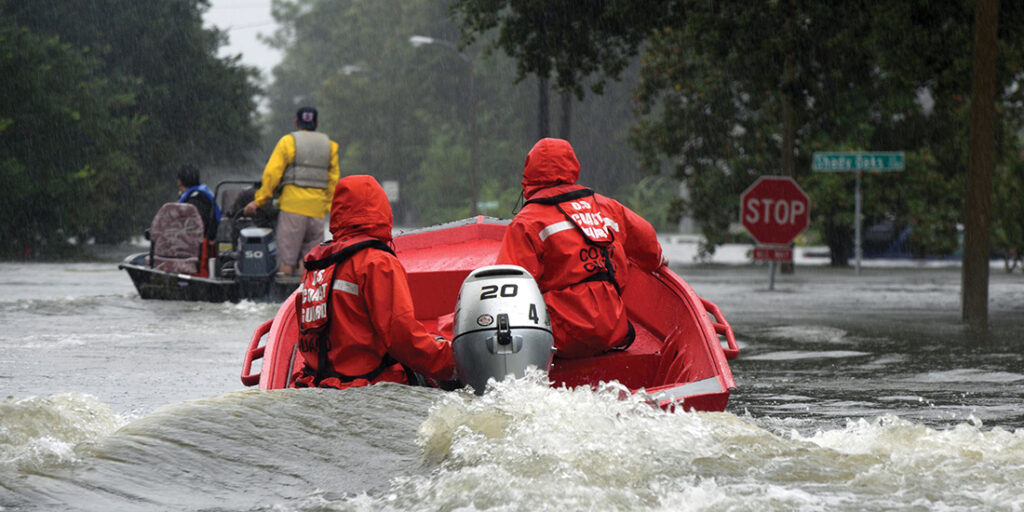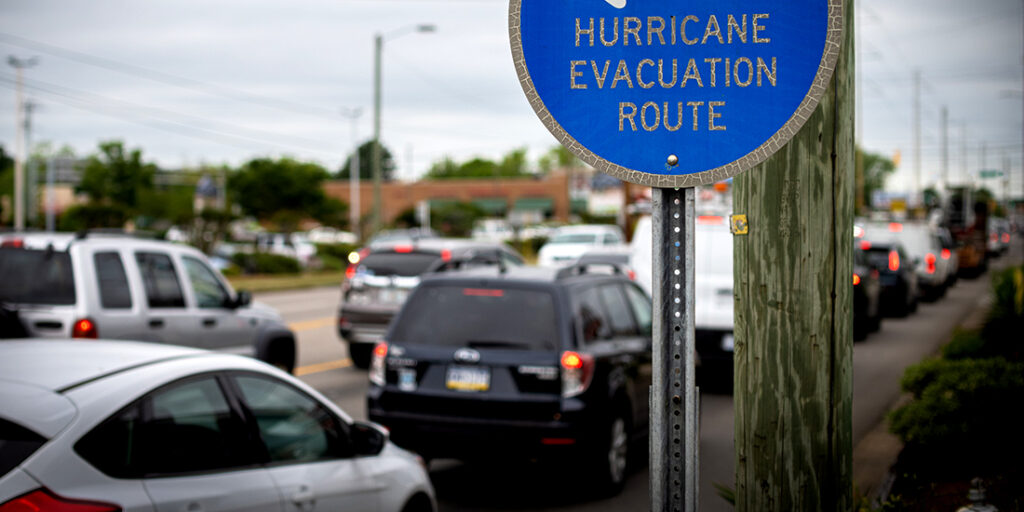AGRICULTURE & FOOD DEFENSE

Emergency Management on Defense, Homeland Security on Offense
- Michael Prasad
While some professionals believe that emergency management should revisit civil defense roles in emergency management, others support maintaining a separation between homeland defense and emergency management roles. This article is a counterpoint to the creation of a “Sixth Framework” for emergency management.
Most Recent

What Volunteers Mean to Emergency Management Budgets
Keith Mumaw
September 17, 2025
Driven by a sense of humanity, volunteers are invaluable to emergency efforts. But they are essential to emergency management in more ways than one. The hours they donate and the costs they absorb by covering their own expenses positively affect the bottom line of budget-strapped emergency management departments.

The United Cajun Navy: Advancing Disaster Response With Volunteerism and Industry Partnerships
Mitchel Reed
September 10, 2025
Formed after Hurricane Katrina in 2005, the United Cajun Navy unites boat owners and other volunteers to aid during floods, hurricanes, and other disasters, bridging gaps in official response and recovery. A volunteer “technical industry liaison” partners with businesses to add technical capabilities and strengthen its efforts. This model shows

Civil Defense: The Unseen Pillars of Preparedness
Stephen Kastensmidt, Scott C. Lanham and John T. “Tim” Briery
September 10, 2025
Core to homeland security are institutions such as active-duty military, the National Guard, FEMA, and local first responders. Complementing these core institutions, however, are three often underrecognized forces that provide consistent, often uncompensated support: the Civil Air Patrol, the U.S. Coast Guard Auxiliary, and State Guard units. This article explores

Lessons From Indigenous Emergency Response in Canada
David Formentini
September 3, 2025
Emergency management in Indigenous communities carries a unique spirit, one not always captured in the structured blueprints of conventional emergency operation centers. Emergency managers should examine culturally appropriate emergency support and communication strategies to improve crisis response.
AGRICULTURE & FOOD DEFENSE ARCHIVES
FIFA, Terrorism, and Preparedness for the 2026 World Cup in the U.S.
Adam Johnson
August 20, 2025
The quadrennial championship of the most popular game in the world—soccer—is coming to the United States in 2026, and fans from around the world will
Threat Detection at Events: A Collaborative, Layered Approach
Tami Richter
August 13, 2025
Large-scale events are high-visibility targets for threats and terrorism, and disruptions can range from minor to catastrophic. Preventing such incidents requires a multilayered approach across
Preparing Small Communities for Terrorist Attacks
Rodney Andreasen
August 13, 2025
Terrorist attacks have broad psychological, social, and economic impacts that often extend beyond the initial target. While large cities are typical targets due to their
Reimagining Readiness: The Future of Emergency Management in Homeland Defense
Cody Santiago
August 6, 2025
Underdeveloped civilian emergency management integration with Department of Defense resources results in gaps in preparedness, intelligence-sharing, and response coordination. A more integrated framework can incorporate
The Optimism Bias Trap: Rethinking Threat Preparedness
Joshua Sullivan
August 6, 2025
Mass violence increasingly targets ordinary people performing routine duties in uniform, behind the wheel of marked vehicles, or responding to emergency calls. This evolution in
Not Optional: The Public Health Consequences of Dismantling Emergency Infrastructure
Andrew D. Pickett and Raphael M. Barishansky
July 30, 2025
During the COVID-19 crisis, decades of investment in healthcare emergency infrastructure—funded through two key federal programs—allowed emergency operations centers to mobilize rapidly, hospital coalitions to
Follow Us
Get Instant Access
Subscribe today to Domestic Preparedness and get real-world insights for safer communities.
AGRICULTURE & FOOD DEFENSE
Most Recent

Overcoming Hurricane Evacuation Delays to Save Lives
Judy Kruger
September 3, 2025
Flooding is the main cause of hurricane deaths in the U.S., and evacuation planning is critical to life safety. For

Fortress at Risk: Critical Infrastructure and Violent Extremism
Thomas Brzozowski
August 27, 2025
Extremism gives rise to individuals, groups, and networks who see critical infrastructure as a prime target for violence. In reality,

A Sixth Framework? Civil Defense and the Future of Emergency Management
George M. Schwartz
August 27, 2025
Comprehensive emergency management in the U.S. evolved from World War II and Cold War-era civil defense, but today, civil defense

The Evolving Landscape of Domestic Extremism
Richard Schoeberl
August 20, 2025
Extremism in its many forms remains a growing threat in the U.S. There is heightened concern about ongoing violent extremist
AGRICULTURE & FOOD DEFENSE Archives
Emergency Management on Defense, Homeland Security on Offense
Michael Prasad
September 17, 2025
While some professionals believe that emergency management should revisit civil defense roles in emergency management, others support maintaining a separation between homeland defense and emergency
A Free Mental Health Resource for All Public Safety Professions
Bridgett Clark
September 17, 2025
Public safety professionals—including emergency communications specialists—face daily exposure to trauma, often without acknowledgment. However, the very systems built to safeguard the larger community frequently fail
What Volunteers Mean to Emergency Management Budgets
Keith Mumaw
September 17, 2025
Driven by a sense of humanity, volunteers are invaluable to emergency efforts. But they are essential to emergency management in more ways than one. The
The United Cajun Navy: Advancing Disaster Response With Volunteerism and Industry Partnerships
Mitchel Reed
September 10, 2025
Formed after Hurricane Katrina in 2005, the United Cajun Navy unites boat owners and other volunteers to aid during floods, hurricanes, and other disasters, bridging
Civil Defense: The Unseen Pillars of Preparedness
Stephen Kastensmidt, Scott C. Lanham and John T. “Tim” Briery
September 10, 2025
Core to homeland security are institutions such as active-duty military, the National Guard, FEMA, and local first responders. Complementing these core institutions, however, are three
Lessons From Indigenous Emergency Response in Canada
David Formentini
September 3, 2025
Emergency management in Indigenous communities carries a unique spirit, one not always captured in the structured blueprints of conventional emergency operation centers. Emergency managers should
Follow Us
Get Instant Access
Subscribe today to Domestic Preparedness and get real-world insights for safer communities.



